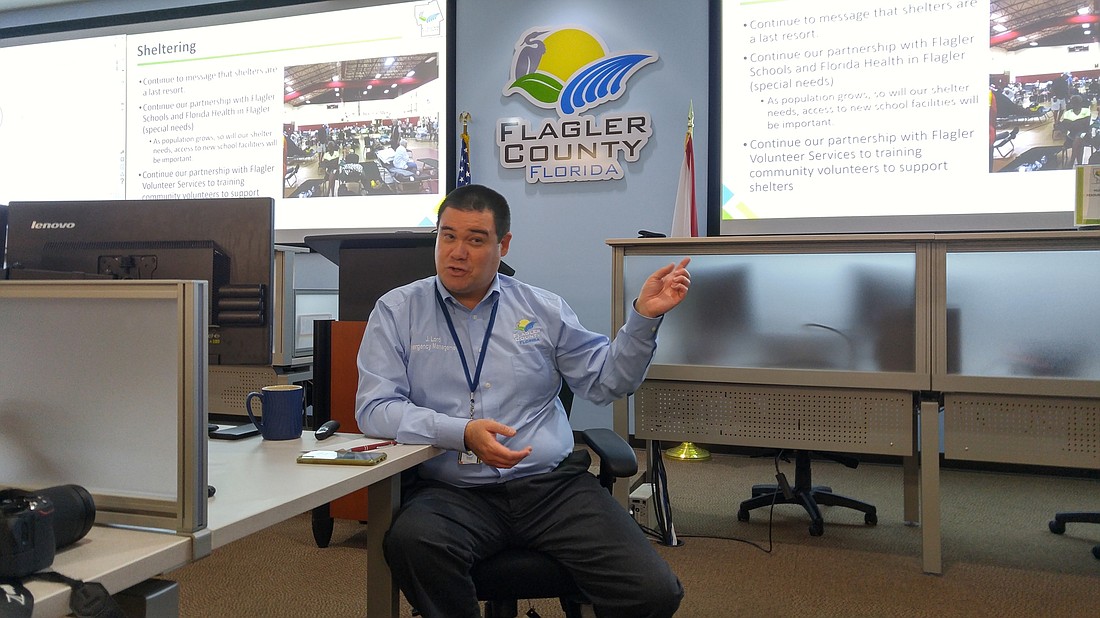- December 13, 2025

On June 1, the first day of hurricane season, Flagler County Emergency Management Director Jonathan Lord held an informal briefing with the media in the Emergency Operations Center. On one of the big screens behind him was a map with an 'X' marking a system near the Yucatan Peninsula and a coned path stretching to Florida.
The system, which became the first tropical depression of the season (TD1) — and by June 5, the first named storm (Alex) — was certainly not a good omen more than two months before the peak of the Atlantic hurricane season.
"There were 21 named storms last year, and this year is supposed to be an active season again," Lord advised.
On May 24, the National Hurricane Center predicted 14 to 21 named storms, 6 to 10 hurricanes and 3 to 6 major hurricanes this year. The 30-year average has been 14 named storms, 6 hurricanes and 3 major hurricanes.
There are signs of an active season. The La Nina climate pattern of cool Pacific waters could strengthen storms in the Atlantic. The loop current is warming water in the Gulf of Mexico. On the other hand, Saharan dust plumes reaching the state can decrease chances of hurricanes.
"All of those things can have no impact. But they all can raise or decrease hurricane potential," Lord said.
The Emergency Management team has met with all personnel that may be assigned to the EOC during an emergency. The team also purchased additional supplies using grant funds and updated the WebEOC disaster management system.
Lord stressed how important it is for residents to make their own preparations.
"It's super important that residents understand what they need to do to protect their homes and know if they're in an evacuation zone," he said.
Everyone should be prepared to be off the grid for up to a week after a hurricane, he said.
"Your internet will go down. It could be for a minute or it could be for days. And your power will flicker. It may go out for a few minutes, or it may go out for days," Lord said, also noting that the FPL has been making the energy grid much more resilient.
"It's super important that residents understand what they need to do to protect their homes and know if they're in an evacuation zone."
JONATHAN LORD, Flagler County Emergency Management director
Hurricane kits should include a gallon of water per person and pet per day, non-perishable food, seven days of medications, spare clothes and old linens and an AM/FM radio. The disaster preparedness sales tax holiday ends on June 10.
The county is continuing its partnership with Flagler Schools, using Bunnell Elementary and Buddy Taylor/Wadsworth for shelters. Rymfire Elementary is the special needs shelter. The Florida Department of Health in Flagler County provides nurses for the special needs shelter. Emergency Management asks those with special needs to register ahead of time.
Lord said the shelters won't be going to enhanced spacing this year after the past two years of COVID-19 protocols. But they will have masks and test kits to pass out on request.
"We have all that stuff we bought. We want to make sure people are comfortable," he said.
The county is transitioning from the A through F evacuation zones, which confused some Palm Coast residents who live in lettered sections. This will be the last year that the zones will be used, but specific neighborhoods and landmarks will also be included in all evacuation orders.
Lord noted that the National Hurricane Center's cone paths are becoming narrower as the center becomes more confident with their forecasts.
"The cones get smaller every few years," he said. "But what's hardest to predict is the the intensity of the storms. It could hit warm water just before landfall," he said.